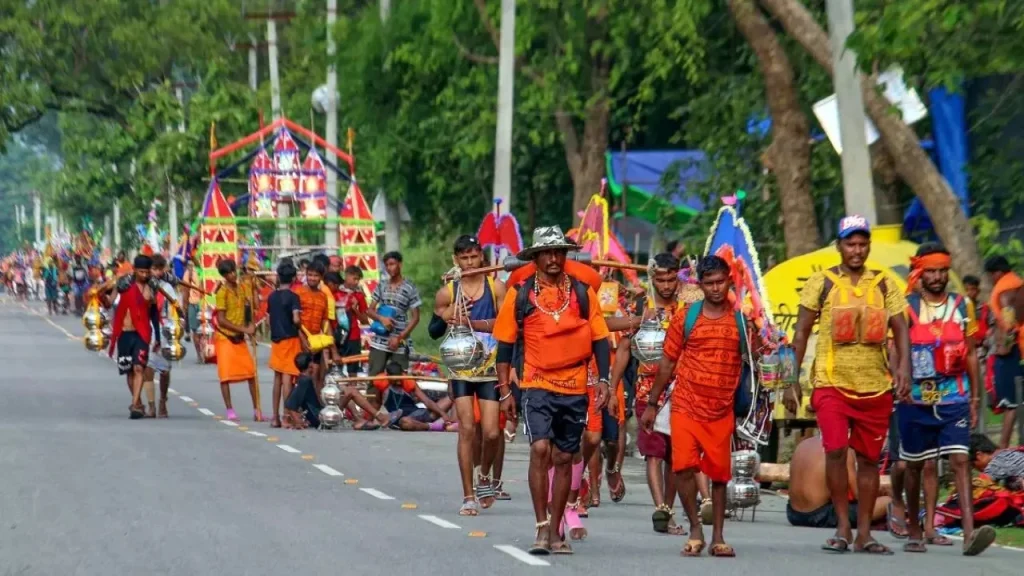09 August 2024: Kanwar Yatra, an annual pilgrimage undertaken by devotees of Lord Shiva, has seen a significant increase in participants and related activities over the years. However, with this surge, instances of property damage have also risen, prompting local authorities to take stringent measures. The Uttarakhand police have announced that they will be recovering costs from individuals responsible for damaging property during this year’s Kanwar Yatra. This decision has been made following the identification of offenders through video footage captured during the event.
Background of the Kanwar Yatra
The Kanwar Yatra is a significant religious event in India, particularly in the northern states, where millions of devotees travel to various holy sites to collect water from sacred rivers. This pilgrimage typically takes place during the month of Shravan (July-August) and involves extensive travel, often on foot, with participants carrying kanwars (sacred pots) filled with holy water. The event is marked by vibrant processions, chanting, and various cultural displays.
While the Yatra is a time of devotion and celebration, it has also been marred by incidents of violence, vandalism, and public disorder in some areas. The increasing number of participants has led to challenges in managing crowds and maintaining public order, resulting in occasional clashes and property damage.
Police Action Against Property Damage
In response to the rising incidents of property damage during the Kanwar Yatra, the Uttarakhand police have initiated a recovery process aimed at holding offenders accountable. The police are utilizing video surveillance to identify individuals who have caused damage to public and private properties during the pilgrimage.According to reports, notices are being sent to those identified in the footage, informing them of the damages incurred and the financial liabilities they are expected to cover. This approach not only seeks to recover costs but also serves as a deterrent to potential offenders in future events.
Implementation of Recovery Notices
The process of issuing recovery notices involves several steps:
- Video Surveillance: The police have set up cameras along key routes and locations where the Yatra takes place. These cameras capture footage of the events, including any acts of vandalism or violence.
- Identification of Offenders: Officers review the footage to identify individuals responsible for property damage. This includes assessing the nature and extent of the damage caused.
- Issuance of Notices: Once offenders are identified, the police send formal notices detailing the damages and the amount to be recovered. These notices are legally binding and require the recipients to respond.
- Legal Consequences: Failure to comply with the recovery notices may lead to further legal action against the offenders, including potential fines or criminal charges.
Community Response
The community’s reaction to this initiative has been mixed. Many residents and local business owners support the police’s efforts, viewing them as necessary to protect their properties and deter future incidents. They believe that holding individuals accountable for their actions will foster a sense of responsibility among participants in the Yatra.
Conversely, some argue that the measures may be overly punitive, particularly for those who may have been caught up in the chaos without malicious intent. There are concerns about the potential for misidentification and the impact of financial penalties on individuals who may already be facing economic hardships.
Legal Framework and Challenges
The legal framework supporting these recovery notices is grounded in various laws that allow authorities to seek compensation for damages caused by unlawful activities. However, the implementation of such measures can be challenging.
Issues such as the accuracy of video evidence, the potential for disputes over the extent of damages, and the administrative burden of processing recovery claims can complicate the process. Additionally, there may be legal challenges from individuals contesting their identification or the validity of the recovery notices.

